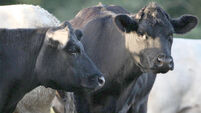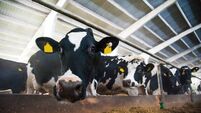Research on risk of contamination
The danger posed by E coli 0157 contamination of beef was brought home to farmers in the mid-1990s, when beef processors started penalising for dirty cattle and farmers started cleaning fat cattle before sending them to factories.
But the dangerous bacteria haven’t gone away.
The Teagasc/UCD research team led by Dr Geraldine Duffy took samples at beef abattoirs, supermarkets and butchers’ shops in Ireland and found prevalence of E coli 0157 varied from 7.3% on bovine hides to 3.0% on carcasses, to 2.8% on minced beef or burgers in shops.
The research team urgently recommended that visible faecal contamination should be removed from the hide and that cross-contamination from hide to carcass must be limited during beef slaughter.
While they said prevalence of E. coli 0157:H7 was low in the beef chain - from 2.4 to 3% - it was highly variable and sporadic samples with extremely high numbers of bacteria posed a higher risk for consumers.
Infection could occur either directly, as a result of eating undercooked beef, or more likely from cross-contamination on to ready-to-eat foods (cooked meats and salads) in the retail or domestic environment, or from hand to mouth contact after handling raw beef.
Further research on how to reduce the risk from E. coli O157:H7 in beef was needed, Dr Duffy stressed.









